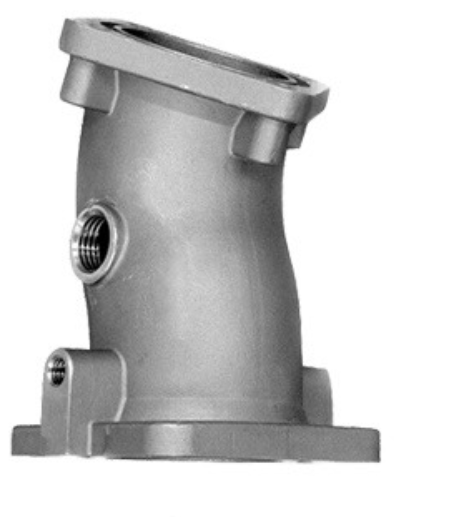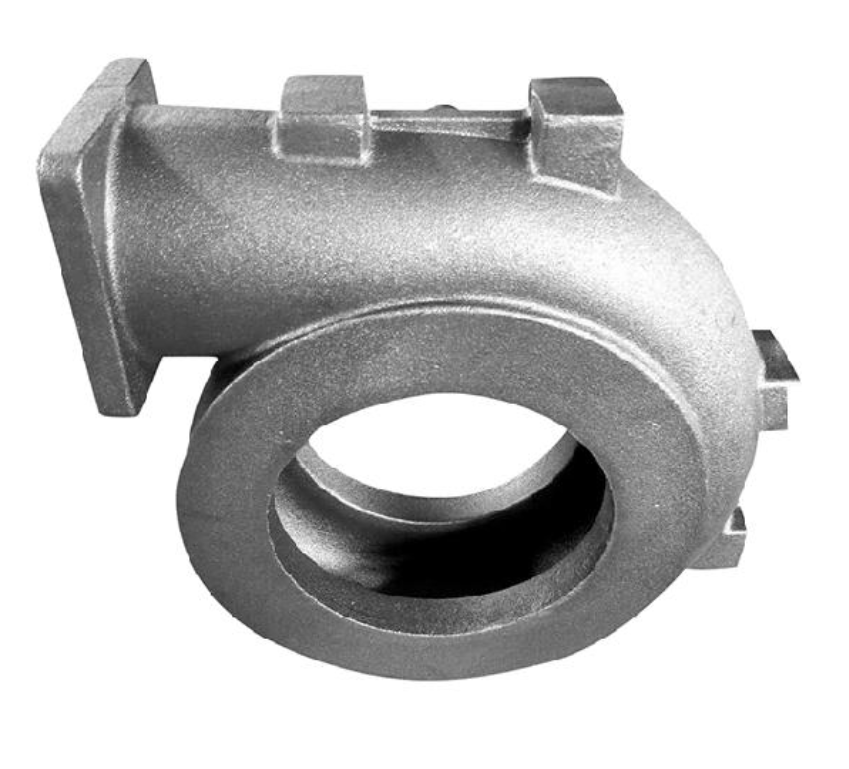Sand Casting
Release time:2024-08-05 16:43:16 Number of views:1020 Publisher:admin Source:编辑部
A.What is the sand casting process?
The sand casting process is a casting method in which sand is used as the main molding material to prepare a casting mold. Sand casting is the most traditional casting method.
Due to its own characteristics of sand casting (not limited by the shape, size, complexity, and alloy type of parts, short production cycle, and low cost), sand casting is still the most widely used casting method in casting production, especially for single or Small batch castings!
The traditional sand casting process has the following steps: sand preparation, mold making, core making, molding, pouring, sand falling, grinding processing, inspection, and other steps.
1. In the sand mixing stage, molding sand and core sand are prepared for modeling. Generally, a sand mixer is used to add sand and an appropriate amount of clay to mix.
2. In the molding stage, molds and core boxes are made according to the parts drawings. Generally, a single piece can be made of wood molds, mass production can be used to make plastic molds or metal molds (commonly known as iron molds or steel molds), and large-scale castings can be used to make mold plates. Now the molds are basically used engraving machines, so the production cycle is greatly shortened, and it generally takes 2 to 10 days to make molds.
3. Modeling (core making) stage: including modeling (using sand to form the cavity of the casting), core making (forming the internal shape of the casting), and mold matching (putting the core into the cavity and closing the upper and lower flasks together). Modeling is a key link in casting.
4. Smelting stage: According to the required metal composition, the chemical composition is prepared, and a suitable melting furnace is selected to melt the alloy material to form a qualified liquid metal liquid (including qualified components and qualified temperature). Smelting generally uses a cupola or electric furnace (due to environmental protection requirements, the cupola is now basically banned, and an electric furnace is basically used).
5. Pouring stage: Use the molten iron ladle to pour the molten iron in the electric furnace into the formed mold. When pouring molten iron, you need to pay attention to the speed of pouring, so that the molten iron fills the entire cavity. In addition, pouring molten iron is more dangerous and needs to pay attention to safety!
6. Cleaning stage: After pouring and waiting for the molten metal to solidify, take a hammer to remove the gate and shake off the sand of the casting, and then use a sandblasting machine to blast sand so that the surface of the casting will appear very clean! The casting blanks with less stringent requirements have been inspected Basically ready to leave the factory.
7. Casting items machining processing, for some castings with special requirements or some castings that cannot meet the requirements, simple processing may be required. Generally, a grinding wheel or a polishing machine is used for processing and grinding to remove burrs and make the castings smoother.
8. Casting items inspection, casting inspection is generally in the process of cleaning or processing, and the unqualified ones are generally found and picked out. However, some castings have individual requirements and need to be checked again. For example, some castings require the center hole to be able to insert a 3 cm shaft, then you need to take a 3 cm shaft and try to wear it.
B.The advantages of the sand casting process.
1. Design Flexibility – Parts can range in size and weight from a few millimeters to a few grams to a few meters to a few tons. The size and weight of the casting are only limited by the handling and supply of the molten metal.
2. High Complexity Shapes – Complex feature shaping no other way to produce nearly final shape parts.
3. Wide selection of materials – virtually all types of engineering alloys can be cast as long as they can be melted.
4. Low cost – Tool and equipment cost is low compared to some other metal fabrication processes. Therefore, making it one of the cheapest ways to achieve near-net-shape parts.
5. Short lead times – short lead times compared to other products, making them ideal for short-run production.
6. Clay is rich in resources and cheap.
7. Most of the used clay wet sand can be recycled and reused after proper sand treatment.
8. The cycle of making the mold is short and the work efficiency is high.
9. The mixed molding sand can be used for a long time.
10. After the sand mold is pounded, it can still tolerate a small amount of deformation without damage, which is very beneficial to drafting and core lowering.
C.History of the sand casting process.
1. Foundry is the basic industry of the national economy, providing casting products for downstream industries such as automobiles, construction machinery, rail transit, mechanical equipment, thermal energy engineering, and aerospace.
2. The foundry industry can be divided into sand casting, precision casting, die casting, etc. Sand casting is the basic process of casting production. It is a casting process with a long history. It can be traced back thousands of years ago. Steel, iron, and most non-ferrous alloy castings can be obtained by sand casting. Therefore, casting generally refers to sand casting. Casting; investment casting, also known as investment casting, can be traced back to 4,000 years ago. It originated in Egypt, China, and India. It is mainly used for the production of copper utensils, bells, and art, and investment casting began to be used in the 1940s. Industrial production; The die-casting process appeared relatively late. In 1838, die-casting equipment was invented to manufacture the mold for movable type printing. In 1904, the American H.H.Franklin Company first used the die-casting process to produce the connecting rod support frame on the automobile, creating the application of die-casting parts to the automobile. A precedent for the automotive industry. Since the 1970s, with the development of the lightweight trend of automobiles, the aluminum die-casting industry has shown a high-speed development trend and is more closely dependent on the automotive industry.
3. Castings have different requirements for material, size, shape complexity, dimensional accuracy, surface roughness, production batch size, etc., and the most cost-effective casting process should be used for production. Different casting processes have their own necessity. Sand casting, precision casting, die casting and other processes have their advantages and disadvantages. There is no iterative relationship with each other in the short term, and there is only a competitive relationship in the field of castings that can be applied to different processes. With the continuous enrichment of casting types, the casting process will also continue to innovate and develop.
4. Sand casting is a process in which the original sand is made into sand cores and sand molds through core making, molding, and other equipment, and forms a casting mold. The molten metal liquid is poured into the casting mold, and the casting is obtained after cooling, solidification, and cleaning. Sand casting is the basic process in casting production. The castings produced by this process account for more than 80% of the total casting output. It is expected that in the next 10 to 20 years, sand casting will still be the most important casting production process in China.
D.Packing and Shipping.
1. Each product is carefully packed with bubble bags and packed in cartons. In order to cause scratches due to knocks, which will affect the quality and use of the product, we will use wooden boxes specially designed for export for packaging and transportation.
2. All products will be transported according to customer needs, such as express, air shipping, sea shipping, and railway shipping.
E.FAQs.
1. How can I get the quotation?
A:We send a quote based on drawing, quantity, weight, and material(a real sample is acceptable).
2. If I don't have the drawing, can you make a drawing for me?
A:Yes, we are able to make the drawing of your sample duplicate the sample.
3. What is your payment method?
A:Tooling:50% T/T advanced,50% T/T balance when sample approval.
Items bulk order:50% deposit T/T,50% balance T/T against the copy of B/L.
4. What kind of file format can you open?
A:PDF, IGS, DWG, X_T, STEP(STP).
5. What surface treatment can you do?
A:Including powder coating, sandblasting, painting, polishing, acid pickling, anodizing, enamel, zinc plating, hot-dip galvanizing, and chrome plating.
6. What is your way of packing?
A:Each product is carefully packed with bubble bags and packed in cartons. In order to cause scratches due to knocks, which will affect the quality and use of the product, we will use wooden boxes specially designed for export for packaging and transportation.
7. Do you have a sub-company overseas?
A:Yes, we have a sub-company in Michigan, USA


